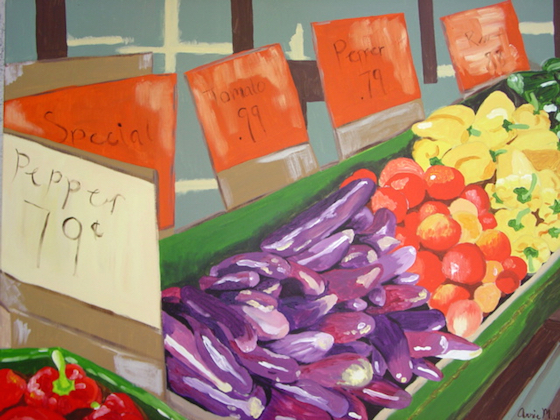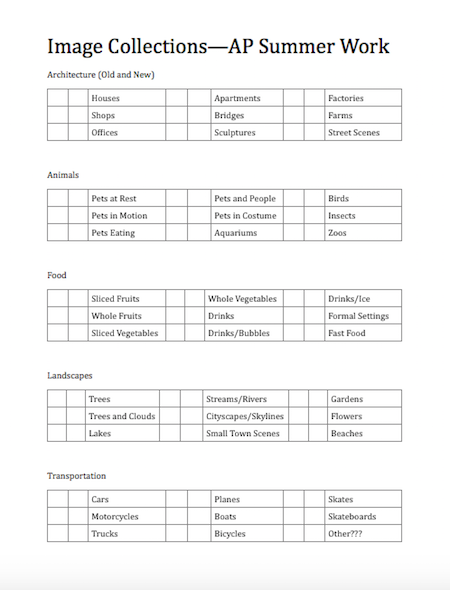If your high schoolers are anything like my high schoolers, they love spending time talking about how bored they are. Yet for whatever reason, that talk never turns into action. Nothing seems to change at the end of the year, as kids are making plans for what they will be doing, or not be doing, over the summer. I always enjoy making an addition to their plans–a little bit of summer homework from their (not always) favorite art teacher. For me, there are always a few of ways to go about it–required summer homework and optional summer homework.
Required Work
Projects
For my students who will be in AP Studio Art, I require that they complete 2 projects over the summer that are “portfolio-worthy”. I type out assignment sheets for 3 projects with in-depth explanations. However, each of the three has enough open-endedness within a theme to allow students room for expression and personal voice. If students don’t like any of those 3 projects, or don’t want to do them, I allow them to complete projects of their own choosing. As long as the quality is there, I am open to just about any idea they bring to me.
Photography List
In addition, I send AP students home for the summer with a checklist of photography subjects. The photos students take are referenced and utilized throughout the year in a myriad of projects. The more images they come in with, the better. Many students end up using the cameras on their phones, which is OK because the quality doesn’t have to be stellar. The idea here is not for the photos to serve as the art project, per se; the idea is to have a library of images that can serve as backgrounds, design elements, and inspiration for them come fall.
You can download my 3-page PDF list by clicking the image below, or get a customized Word version by clicking here.
Optional Work
Projects
For the rest of my students, summer homework is optional. I have a list of projects that I give to whoever may want it, and to a few others that I think might just take on the challenge. These are more lighthearted, fun projects that could take all kinds of different directions. I think it goes without saying, but if kids enjoy the work they are doing, they are more likely to complete it.

Here are a few ideas I like to use:
- Have a friend pose for you. In 20 minutes draw 20 poses. Go!
- Create a drawing or painting inspired by song lyrics or a piece of writing.
- Create a time-lapse video of you working on a drawing or sculpture.
- Sculpt your favorite food out of mud or sand. Photograph it from multiple angles.
- Visit someplace colorful–a farmer’s market, a flower shop, a candy store, or a museum. Make art inspired by the location.
Media Consumption
Lastly, I love to have students take the time to look up interesting artists using not only books and websites, but videos and other media. Artists my students really respond to are Banksy, Robert Longo, Maya Lin, Cheeming Boey, Kara Walker, James Turrell, and Kehinde Wiley. The Art 21 series from PBS is also a great resource. The key is to make the artist interesting enough that kids want to look at more of their work and learn more about the art being made.
Whether your students are making work because they want to or making work because they have to, summer homework is a great avenue to keep them involved and engaged over the summer. There is undoubtedly a challenge in seeing that work is actually completed, but if it is, students come back to the next school year with renewed energy, more confidence, and hopefully a little better understanding of their own art and the art of others.
Do you assign summer homework? Why or why not?
What summer homework assignments have been successful for you?
Magazine articles and podcasts are opinions of professional education contributors and do not necessarily represent the position of the Art of Education University (AOEU) or its academic offerings. Contributors use terms in the way they are most often talked about in the scope of their educational experiences.





